Local Foods and Beverages
 The trend in local food consumption has been steadily increasing over the past decade. There has been a significant amount of growth in both direct-to-consumer marketing outlets, such as farmers' markets and community supported agriculture, as well as wholesale procurement. Harvest NY Specialists foster this continued growth through innovative programming and targeted business development consultations. With education and outreach on market readiness, good agricultural practices (GAPs) and operation develop, Harvest NY provides support to farmers to understand and implement changes to mitigate the barriers that often stymie the ability of small farms from participating in larger and more diversified markets.
The trend in local food consumption has been steadily increasing over the past decade. There has been a significant amount of growth in both direct-to-consumer marketing outlets, such as farmers' markets and community supported agriculture, as well as wholesale procurement. Harvest NY Specialists foster this continued growth through innovative programming and targeted business development consultations. With education and outreach on market readiness, good agricultural practices (GAPs) and operation develop, Harvest NY provides support to farmers to understand and implement changes to mitigate the barriers that often stymie the ability of small farms from participating in larger and more diversified markets.The Harvest NY Farm to Institution Program offers an e-newsletter, Harvest NY Farm to School Newsletter. This publication provides updates, resources, and insights for school Food Service Directors, Farm to School Coordinators, farmers and producers, and others working to support Farm to School efforts across New York State.
LOCAL FOODS AND BEVERAGES CATEGORIES
NYS Produce Auctions Locations and Contact Information
Judson Reid, Extension Vegetable Specialist, Team Leader
Harvest New York
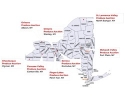
Produce auctions in New York State have been formed so that produce growers have a way of marketing their product to quality minded buyers through open competitive bidding. A map of produce auction locations across the state is provided along with contact information. Auction days and times vary by location and by year. Contact the auction directly for the schedule.
Evaluating the Growth and Impact of the 30% NY Initiative, 2023-24
Cheryl Bilinski, Local Food Systems Specialist, Farm to School Lead
Harvest New York
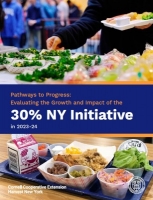
Pathways to Progress: Evaluating the Growth and Impact of the 30% NY Initiative in 2023-24 is a product of Cornell University Farm to School (CU F2S). The report analyzes the procurement data of 73 School Food Authorities (SFAs) that qualified for the 30% New York State Initiative (NY30) based on NY food product (NYFP) purchases made during the 2023-24 school year (SY). The goals of this analysis are to:
- Assess the growth of the NY30 program and measure progress in relation to its legislative intent.
- Evaluate purchasing patterns across various food industry groups, comparing current data with purchases from the 2019-20 SY.
- Identify current barriers to purchasing NYFPs across food industry groups and compare these with the barriers identified in 2019-20.
- Examine strategies and resources that enhance the likelihood that SFAs will be successful in the NY30.
- Identify areas where further research is needed to advance the NY30 program.
Cornell Farm to School Program
Becky O'Connor, Farm to School Coordinator, WNY & Finger Lakes
Harvest New York
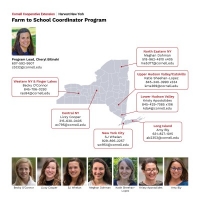
The Cornell Farm to School Program includes 7 Regional Procurement Specialists, an Education Specialist, and a Program Lead.
FAQs Regarding 30% NY Initiative Reimbursement
Cheryl Bilinski, Local Food Systems Specialist, Farm to School Lead
Harvest New York
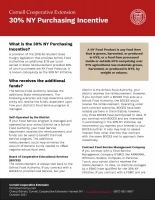
A provision of the No Student Goes Hungry legislation provides School Food Authorities (SFAs) an additional $.19 per lunch served in State reimbursement provided 30% of lunch purchases are NY Food Products. It is known colloquially as the "30% NY Initiative". The additional reimbursement is tied to the SFA, which varies by district. Through the 30% NY Initiative, students gain access to healthy local food, SFAs receive needed additional State reimbursement, and local businesses are supported. To learn more about the opportunity, which entity receives the additional reimbursement, tentative reimbursement rates, and benefits of the program, please refer to the FAQs Regarding 30% NY Initiative Reimbursement factsheet linked below.
School Lunch Close to Home
Amy Bly, Farm to School Coordinator, Long Island
Harvest New York
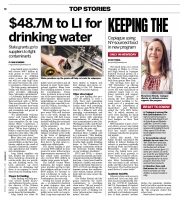
The NY Food Hub Collaborative
Cheryl Bilinski, Local Food Systems Specialist, Farm to School Lead
Harvest New York
Cornell Cooperative Extension has received a USDA Regional Food Systems Partnership Planning and Development grant for the NY Food Hub Collaborative.
Farm to School at the Hudson Valley Food Show
Becky O'Connor, Farm to School Coordinator, WNY & Finger Lakes
Harvest New York
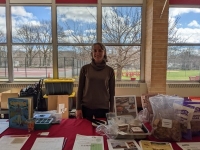
Harvest NY Regional Farm to School Coordinators collaborated with the Hudson Valley Food Service Directors Coalition to bring local foods and vendors to a food show for area food service directors.
Selling NY Produce to NY Schools
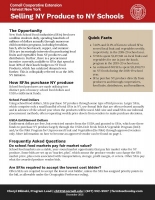
This two-page fact sheet explains how NY produce farmers and distributors can sell their goods to school food authorities.
30% NY Initiative: Opportunities, Barriers, and Pathways to Success
Cheryl Bilinski, Local Food Systems Specialist, Farm to School Lead
Harvest New York
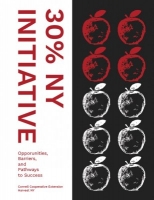
The 30% NY Initiative: Opportunities, Barriers, and Pathways to Success report is a product of Cornell Cooperative Extension Harvest NY and Cornell Cooperative Extension Allegany County. The report analyzes procurement data from 53 of the 57 school food authorities (SFAs) that qualified for the 30% NY Initiative during the 2019-20 school year. In addition to analyzing procurement data, we surveyed successful SFAs to understand how they altered their diversions and use of entitlement funds in preparation for the 2019-20 school year and barriers to purchasing local food, by commodity group. A combined analysis of the 30% procurement data and the survey results shed light on procurement trends, varying pathways, best practices, and strategic approaches to successfully achieving the 30% NY Initiative.
Farm to School Program Spotlight: CCE Niagara
Becky O'Connor, Farm to School Coordinator, WNY & Finger Lakes
Harvest New York
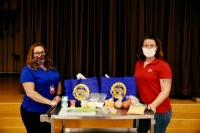
Cornell Cooperative Extension of Niagara County adapted educational programming to meet the needs of schools and families during COVID-19.
30% NY Documentation Requirement Guides and Recorded Webinars
Becky O'Connor, Farm to School Coordinator, WNY & Finger Lakes
Harvest New York
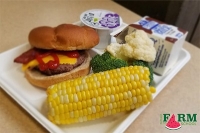
Harvest NY, with input from the NY State Department of Education, developed the 30% NY Documentation Requirement Guide and accompanying recorded webinars to prepare School Food Authorities for success in their 30% NY Initiative audits.
Harvest of the Month Marketing Materials
Becky O'Connor, Farm to School Coordinator, WNY & Finger Lakes
Harvest New York
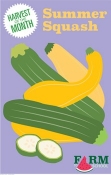
Harvest of the Month posters, newsletters, and infographics were created to help highlight and promote the consumption of locally-grown, raised, and produced foods foods. You can download, edit, and adapt the Harvest of the Month materials for your district or program's use.
Buffalo Public Schools Launches New Farm to School to You Food Truck
Becky O'Connor, Farm to School Coordinator, WNY & Finger Lakes
Harvest New York
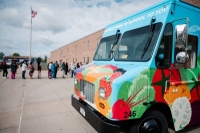
On October 7th, Buffalo Public Schools introduced the newest addition to their nationally-recognized Farm to School program: The Farm to School to You food truck.
30% NY Initiative Eligible Product Database
Cheryl Bilinski, Local Food Systems Specialist, Farm to School Lead
Harvest New York
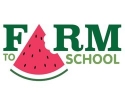
The 30% NY Initiative Eligible Product Database is a database of NY food products made with at least 51% raw NY agricultural ingredients.
Planning Your Commodity Order Wisely Can Help You Reach the 30% NY Threshold
Becky O'Connor, Farm to School Coordinator, WNY & Finger Lakes
Harvest New York

Article by Rosemarie Hanson, Trumansburg Central School District Food Service Director, and Gail Brisson, Trumansburg Middle School Librarian; originally submitted to FOCUS Magazine.
If you are trying to increase your purchases of local and NY State foods to achieve the 30%, the first place you should look is your commodity ordering. Read on to learn about how you can balance commodity foods with local foods to reach your NY purchasing goals.
Food-Service Friendly Recipes
Becky O'Connor, Farm to School Coordinator, WNY & Finger Lakes
Harvest New York
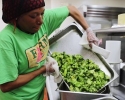
To supplement the Harvest of the Month program, Harvest NY has curated a list of popular recipes from school districts. Expand your school lunch menu with one of these yummy recipes!
Insuring Malting Barley in New York Factsheet (2019)

Are you a malting barley grower considering crop insurance? This factsheet provides on the crop insurance policies, where in New York you can insure malting barley, and important deadlines to keep in mind.
Malting Barley: Keys to Successful Production in New York State

This comprehensive guide, developed by College of Agriculture and Life Sciences at Cornell University faculty and Cornell Cooperative Extension Specialists, provides 10 essential malting barley production recommendations for growers in New York State.
Hard Cider Supply Chain Analysis
Lindsey Pashow, Ag Business Development & Marketing Specialist
Harvest New York
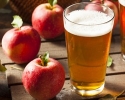
Hard cider is a fast-growing craft beverage industry in New York, in part due to the passage of the Farm Cider Law in 2013, which affords licensees certain benefits, but requires the use of New York-grown agricultural products. With increasing market demand for hard cider variety apples, there may be challenges with sourcing specialty cider apples, such as bittersharps, bittersweets and heirloom dual purpose (dessert/cider).
Guide on How To Purchase at New York State Produce Auctions
Judson Reid, Extension Vegetable Specialist, Team Leader
Harvest New York
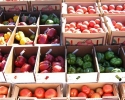
A produce auction is a wholesale market for regionally grown produce. Currently there are eight produce auctions in New York State offering a wide variety of produce at competitive prices. This guide will provide basic instruction on the terminology of the auction, as well as how to purchase produce at these unique markets!
NYS Brewery Supply Chain Analysis, v2
Cheryl Bilinski, Local Food Systems Specialist, Farm to School Lead
Harvest New York

The NYS craft beer industry has experienced significant growth in the past few years due, in part, to the passage of the Farm Brewery Law, which grants breweries that choose to operate under this license certain benefits, but also requires the purchase of an increasing percentage of NYS grown ingredients between 2013 and 2024. In response to this emerging market opportunity, New York State Empire State Development, New York State Department of Agriculture and Markets, Cornell College of Agriculture and Life Sciences, Cornell Cooperative Extension, Hartwick Center for Craft Food and Beverage, and the NYS Brewers Association have been busy working with growers, malt house operators and breweries on a number of different research, technical assistance and programmatic efforts to ensure the continued growth and viability of this nascent, yet potentially significant economic driver for NYS.
To support this industry, Cornell Cooperative Extension Harvest NY administrated round one of market surveys in 2015 and administered a second round of surveys to growers, malt house operators and breweries in the spring of 2017. The information contained within this report includes an analysis of the survey data received in the second round of survey administration.
Starting a Winery in Northern New York: Considerations and Costs
Lindsey Pashow, Ag Business Development & Marketing Specialist
Harvest New York

Are you interested in starting a winery in Northern New York? CCE Harvest New York has put together a report and interactive Excel spreadsheets on Starting a Winery in Northern New York: Winery Establishment Considerations and Costs.
Economics of Malting Barley Production
Cheryl Bilinski, Local Food Systems Specialist, Farm to School Lead
Harvest New York
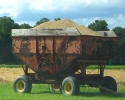
John Hanchar of CCE Northwest NY Dairy, Livestock and Field Crops team worked with specialists, producers and others in the malting barley industry to develop enterprise budgets under various conditions -- spring vs. winter varieties, varying tillage practices, standard vs. intensive management, and others. Enterprise budgets comprise: value of production, income; costs of production (variable and fixed inputs); and returns, for example, return above variable costs, and return above total costs.
Malting Barley Alternative Markets
Cheryl Bilinski, Local Food Systems Specialist, Farm to School Lead
Harvest New York
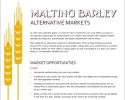
What will you do if the malting barley you've grown does not meet the specs of your maltster? Plan ahead for an alternative market for rejected barley. This can help minimize economic losses if the crop is rejected based on grain quality. Using barley as an animal feed as a portion of finishing rations for beef cattle is a good option as well as including it in a dairy cow ration -- barley is a comparable substitute for corn.
This flyer will provide information about market opportunities for rejected barley and potential buyers.
Buffalo Farm-to-School Project
Cheryl Bilinski, Local Food Systems Specialist, Farm to School Lead
Harvest New York
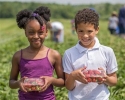
As part of the Harvest New York Buffalo Farm-to-School (F2S) initiative, 50 or so fourth and fifth grade students from Hillery Park Elementary School visited Burley Berries and East Hill Farms in Warsaw, New York to learn about where their food comes from.
Quality Testing Available through Hartwick College
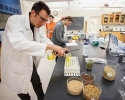
Hartwick College Center for Craft Food and Beverage now provides quality testing services in New York. The testing lab provides convenient, reliable and affordable barley quality, beer quality, hop quality, and malt quality testing.
Cornell Malting Barley Resources -- Breeding Program, Variety Trials, Research
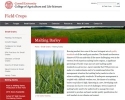
Cornell University has started a malting barley breeding program, is conducting variety trials across the state, and is engaged in research to reduce disease and mycotoxin contamination.
Double Up Food Bucks Western NY Report, 2014-2015
Cheryl Bilinski, Local Food Systems Specialist, Farm to School Lead
Harvest New York
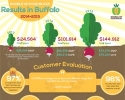
Double Up Food Bucks (DUFB) uses existing infrastructure -- farmers markets and EBT - the mechanism SNAP recipients use to receive their benefits -- to improve access to and affordability of fresh fruits and vegetables for low-income individuals and families and grow the local food economy by supporting purchases from local farmers.
In our 2014 pilot season DUFB was administered at 7 area farmers markets, spanning 3 counties. In 2015, the DUFB program expanded to 15 farmers markets, including a mobile market, spanning five counties.
NYS Brewery Supply Chain Analysis, v1, 2016

Following the passage of New York's Farm Brewery Law in 2013, new markets developed for malting barley farmers, malt house operations and farm brewers. As these new markets developed, grain quality, quantity and price projections for the industry were made based on the best available information at the time. However, it was clear that a more comprehensive market analysis was needed in order to best support this growing industry. This report summarizes the data gathered through that analysis.
Double Up Food Bucks 2014 Year End Report
Cheryl Bilinski, Local Food Systems Specialist, Farm to School Lead
Harvest New York

Piloted in 2014, the Double Up Food Bucks program is viewed as a tremendous success in meeting program goals. Read a brief overview of the program successes realized at participating markets in 2014.
Western NY Food Hub seeks new produce growers to work with!
Cheryl Bilinski, Local Food Systems Specialist, Farm to School Lead
Harvest New York
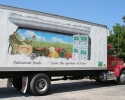
Eden Valley Growers (EVG) is opening their doors to new produce growers interested in selling through wholesale market channels! Dubbed the Western NY Food Hub, this business diversification will provide qualified growers with immediate access to wholesale markets. Based in Erie County, EVG is a vegetable growing farm cooperative that recently celebrated its 50th anniversary. Recognizing the increasing demand for locally grown food and the considerable assets the cooperative has, both in terms of infrastructure, sales and marketing, they are eager to provide Western NY farmers with a viable market for their produce.
Video: New York State Produce Auctions
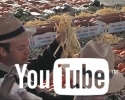
The number of produce auctions in New York State continues to increase. These auctions are aggregation points that allow local farmers to sell their produce in wholesale lots to buyers from across the region. To document the economic impact of produce auctions on agriculture, local businesses, family farms, and produce buyers, the Cornell Vegetable Program worked with Harvest NY to survey top sellers and buyers.
A new Cornell Vegetable Program video shares general information about produce auctions, how buyers and sellers use the auctions to expand their businesses, and how local communities benefit from them.
What is the Double Up Food Bucks Program in WNY
Cheryl Bilinski, Local Food Systems Specialist, Farm to School Lead
Harvest New York
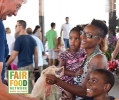
In partnership with lead agency, Field and Fork Network, Harvest NY has forged a national partnership with Fair Food Network to pilot their highly successful program, Double Up Food Bucks (DUFB), in Western NY farmers markets. Using philanthropic funds, DUFB matches SNAP purchases of fresh fruits and vegetables at participating farmers markets up to $20 per visit, to be used on fresh fruit and vegetables grown in NYS.
Upcoming Events
Whole Farm Climate Adaptation and Mitigation Planning (CAMP) Series
January 13 - February 12, 2026
Jan 13, Jan 29: 10:00 AM - 4:00 PM; Feb 12: 1:00 - 4:00 PM
Kingston, NY
Join CCE Ulster and CCE Harvest New York for a three-part workshop series focused on building climate resilience on your farm. We will cover climate change adaptation and mitigation strategies, learn how to access relevant historical climate data, and begin a climate adaptation plan for your farm!January 13 (Tues): 10:00 AM - 4:00 PM
January 29 (Thurs): 10:00 AM - 4:00 PM
February 12 (Thurs): 1:00 PM - 4:00 PM
